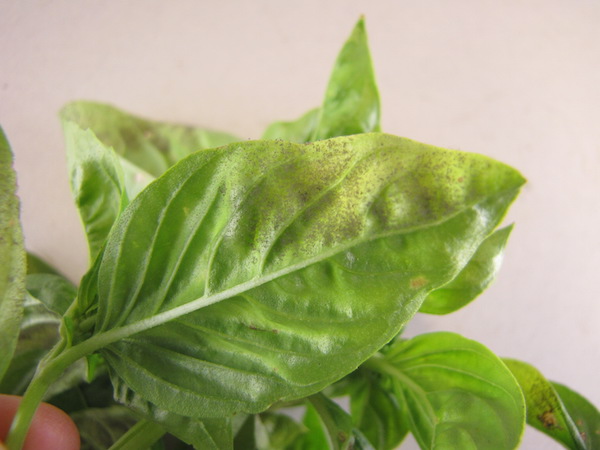

Intermediate resistance (IR): shows less severe symptoms or damage than susceptible plant varieties. High resistance (HR): usually no symptoms or only minor damage. Here are some cultivars with known resistance to the two diseases: In Eurasia, resistant cultivars have mostly been coming from Israel.
BASIL DOWNY MILDEW SERIES
Both series are identified with the abbreviation DMR (downy mildew resistant). Rutgers University of New Brunswick, New Jersey (the Rutgers series of hybrids) and Cornell University of Ithaca, New York (the series) have been at the forefront of these new developments in the United States. (Every farmer knows that if you want a strong work horse, you breed two strong work horses together.) No, the improved basils are not GMOs (genetically modified organisms): this is just the same old crossing and selection process that humans have been using for thousands of years to domesticate and improve crops more appropriate to human use. basilicum) have a natural resistance that has been enhanced by careful breeding: crossing resistant plants together, then selecting those with the best resistance for further crosses. Researchers have spent a lot of effort in developing disease-resistant cultivars. Developing Resistant Cultivars ‘Rutgers Devotion DMR’ is one of four new disease-resistant basils from Rutgers University. In wet weather, the disease rapidly travels throughout the rest of the plant, although the upper leaves still remain less affected than the lower ones. Later, a thin layer of dark gray down appears underneath the leaves which then turn even yellower, then necrosis (dead brown patches) appears. The first symptom of DM is a slight yellowing of lower leaves, concentrated between the leaf veins. The underside of this leaf shows the gray moldy growth typical of downy mildew. Carried by the wind for very long distances and also by water splashed on basil leaves during rainfall, spraying or watering, its spores can really get around! Judging from the state of the basil plants I’ve been seeing in local community gardens, it’s rampant. Photo: ĭM is a funguslike organism not so conveniently controlled. Genovese basil in the last stages of downy mildew. So, unless your soil is already contaminated (the spores can survive freezing temperatures), you might be able to keep it at bay by buying seeds from serious suppliers.
BASIL DOWNY MILDEW FREE
It’s a soil- and seed-borne fungus. It seems to be the lesser of the two diseases these days, as serious seed companies are now supplying seed tested to be free of spores. It can attack both seedlings and more mature plants. Then the stem withers and collapses and the foliage turns black. Photo: Debbie Roos, North Caroline State UniversityįW causes dark brown stem cankers that cut off sap flow to the leaves. In general, the less a basil looks, smells and tastes like sweet basil, the less susceptible it will be to both diseases. americanum), etc.-appear to be moderately to highly resistant to both diseases. Note that most other species of basil-lemon basil ( O. They’re now well established on every continent except Antarctica. Undoubtedly they transferred from a wild species and found sweet basil an appropriate host.

Background Storyīoth diseases seem to have come out of nowhere: basil fusarium wilt ( Fusarium oxysporum basilici) or FW between 20 and basil downy mildew ( Peronospora belbahrii) or DM by the mid-2010s. Individually or together, they cause a lot damage. Photo: ĭid your sweet basil ( Ocimum basilicum) turn black and die last summer? Millions of plants did around the world, with the continued spread of two serious and usually fatal (to the plant!) basil diseases: basil fusarium wilt ( Fusariumoxysporum basilici) and basil downy mildew ( Peronospora belbahrii). Yes, your basil can look this good again thanks to improved disease-resistance in recent hybrids.


 0 kommentar(er)
0 kommentar(er)
